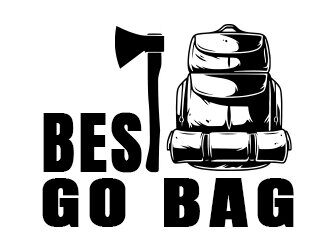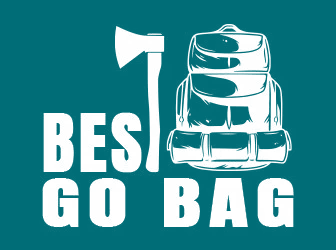A person who has suffered severe injury is at risk of developing shock – a steadily worsening condition that can be described as a “running down of life forces”.
First aid can minimize the development of shock if the possibility is recognized well in time. In fully developed shock, minimal first aid is possible, but it is still important until the victim can be got to a medical facility.
In medical terminology, ‘shock’ refers not to an emotional upset, but to a physical condition – a failure of the heart to provide adequate circulation to all parts of the body. It is caused by a loss of blood fluid, typically following severe injury.
When there is severe bleeding, the reduced volume of blood in the body results in a weakened heartbeat and an inadequate supply of oxygen and other nutrients to the tissues.
In particular, the centers in the brain which regulate respiration, heart action, and blood pressure no longer work adequately. A vicious circle is therefore set in motion.
RELATED: Medical Preparedness: Which Should You Store?
TYPES OF SHOCK
Below Are The Situations That Can Cause Different Types of Shock:
Hemorrhagic Shock
also called ‘bleeding shock’. This is the most common form of serious shock resulting from the loss of blood, as in burns/crushing injuries. The bleeding may be internal or external. If the person is in a state of dehydration or is sweating profusely, it can hasten the onset of shock. This can typically happen if a burns/crushing injury occurs in a workplace of high temperature.
Cardiogenic Shock
Also called ‘heart shock’. It results from a failure of the heart to pump blood adequately to all parts of the body. Typical causes are electrical shock, heart attacks, and injury to the heart. Diseases like low blood pressure and oedema of the ankles, if untreated, may do enough damage to cause cardiogenic shock.
Neurogenic Shock
Also called ‘nerve shock’. It results from the failure of the nervous system to control the diameter of the blood vessels. The blood vessels dilate beyond the point where the available blood can fill up the new volume. Blood no longer fills the system adequately, but pools in the blood vessels in certain areas of the body.
Typically, this kind of shock is due to nerve paralysis caused by spinal cord or brain injury. Severe blows to the abdomen can also disrupt the nerves, bringing about neurogenic shock.
Respiratory Shock
Also called ‘lung shock’. This results from a failure of the lungs to provide enough oxygen for circulation to the tissues. Watch out for it in cases of fractured ribs or sternum, deep chest wounds, neck/spinal cord injury, or airway obstruction.
Metabolic Shock
Also called ‘body fluid shock’. It may occur in cases of severe diarrhea, vomiting, or polyuria (excessive urination). These conditions cause the loss of fluids from the bloodstream.
Anaphylactic Shock
Also called ‘allergy shock’. This is a life-threatening reaction of the body to an allergen (something to which the person is extremely allergic).
RELATED: Basic Medical Symptom Care: How to Handle Common Illnesses
SYMPTOMS & SIGNS
The most significant symptom of shock is:
- Weakness
Other symptoms may include:
- Nausea
- Thirst
- Dizziness
- Coolness
- Restlessness and fear
The signs to look out for are:
- Profuse (external) bleeding
- Vomiting
- Fainting/Lack of responsiveness
- Rapid and weak pulse
- Rapid and shallow breathing
- A marked drop in blood pressure (as low as 90/60, or below)
- Pale, moist, and cool skin. Often profuse sweating
- Lackluster eyes dilated pupils
- General restlessness
It’s important to remember that, immediately after serious injury (for example), the victim may appear tough and resistant, but that, inside him, the machinery of shock may have been set in motion.
It may be a matter of some minutes before he shows the typical signs, or it may be several hours.
FIRST AID FOR SHOCK
A person in shock must be got to medical attention urgently. In the meanwhile:
- Ensure an adequate airway (if the person is breathing), by positioning his head properly. If he is not breathing, provide mouth-to-mouth resuscitation.
- Control the bleeding. The direct pressure on the injury site is the quickest and most efficient way to do this. Do not waste time hunting for a dressing – use a finger or hand directly over the wound, and maintain pressure until the bleeding is stanched. (Even though you may be contaminating the wound, the risk of uncontrolled bleeding far outweighs that of possible infection. The loss of blood volume is particularly life-threatening for a person in shock.)
- Keep the patient warm. The aim is to keep his body temperature as near to normal as possible. Remove any wet clothing if possible, and wrap the patient loosely in blankets or an overcoat. But do not allow the patient to overheat: the extra heat may draw to the skin’s surface a large volume of blood from the depths of the body where it is needed for the essential organs of life. Do not move patients with head/neck/spine injuries to place a blanket under them.
- Ensure rest and position. Treat the patient where he is (except if you’re in a danger zone – fire, fumes, collapsing building, etc.) The more at rest a shock patient remains, the better his chances of survival. Avoid rough or excessive handling, since body motion tends to aggravate shock. In particular, beware of moving a patient who may have a fracture – especially if his back is involved. If there are serious injuries to the extremities, keep the patient flat on his back. If the patient is conscious but appears to have respiratory or heart problems, he may be most comfortable (and breathe more easily) in a semi-reclining position, with his head raised a little.
- Give nothing by mouth. Do not give food/medications or even tea or coffee by mouth. The patient may vomit, in which case, anything he brings up may be aspirated into his windpipe and choke him.
- Reassure the patient. Reducing mental anxiety plays a great role in warding off a shock. Talk to the patient with calm confidence, explaining your actions as reassuringly as possible. Tactfully but firmly clear away any agitated or demoralizing bystanders.
Finally, remember that in situations where the shock is a distinct possibility (such as significant blood loss), it is advisable to carry out all the above steps, even if the patient’s condition seems quite stable. The bottomline is: when in doubt, treat for shock.
There are millions of hits on the internet search drive for Wellness – from mental to physical health, cardiac fitness, cancer, yoga, how to overcome certain ailments such as diabetes, hypertension, obesity, stroke, and tips on weight loss and how to grow taller, with many other ideas getting honorable mention.
It takes quite a bit of research to find any one site that has so much to offer on all these fronts, let alone one that can combine all the needs for your innermost wellness – joy, bliss, and beyond.
For wellness’s sake, you can stop looking out there, and take some time for yourself, a sort of one-stop-shop: Balanced Lifestyle Wikipedia.
Also, stay informed about genuine reviews of trendy products like Yoga Burn, Lean Belly Breakthrough, Grow Taller 4 Idiots, bioptimizers masszymes, and many more to nourish and transform your everyday self.
Article Source: https://EzineArticles.com/expert/Andy_G/2325820
Up Next:
- Instant Mashed Potatoes: Awesome Survival Food?
- 5 Surprising Survival Uses for a Tampon
- How To Turn Your Bug Out Bag Into A Minimalist Backpack
Calling all preppers, craftsmen, bushmasters, outdoorsmen, and all-around skilled people, Survival Life needs YOU! Click here if you want to write for us.
Don’t forget to stay connected with us on Facebook, Twitter, Pinterest, and Instagram!
Article Source: http://EzineArticles.com/


